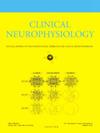期望使用θ波爆发刺激方案缓解疼痛。系统回顾
IF 3.7
3区 医学
Q1 CLINICAL NEUROLOGY
引用次数: 0
摘要
重复性经颅磁刺激(rTMS)对初级运动皮层(M1)的疼痛治疗通常基于传统的高频(HF)模式。新的脑电波刺激(TBS)模式越来越多地被用于各种治疗应用,如抑郁症的治疗。直到2025年1月,我们对文献进行了分析,以评估在健康受试者引起的实验性疼痛或患者经历的慢性疼痛的背景下,各种TBS方案(间歇性TBS、iTBS、连续TBS、cTBS和延长方案、piTBS和pcTBS)的镇痛效果。在实验性疼痛(19篇)中,M1的pcTBS主要产生镇痛作用。相反,在慢性疼痛(19篇文章)中,单独使用或用于启动HF-rTMS的M1的iTBS相当缓解疼痛。然而,迄今为止报告的数据太少,无法得出iTBS与HF-rTMS相比的结论。较短的iTBS疗程开启了“加速”手术的前景,有望在疼痛领域得到应用。然而,有必要精确控制刺激参数(例如,每天每次会话传递的脉冲数量或会话之间的间隔)并评估它们对皮层兴奋性和连通性的影响。本文章由计算机程序翻译,如有差异,请以英文原文为准。
Expectations related to the use of theta burst stimulation protocols for pain relief. A systematic review
Pain treatment by repetitive transcranial magnetic stimulation (rTMS) of the primary motor cortex (M1) is generally based on the conventional high-frequency (HF) paradigm. Newer theta-burst stimulation (TBS) paradigms are increasingly being used instead of HF-rTMS in various therapeutic applications, such as the treatment of depression. The literature was analyzed until January 2025 to appraise the analgesic effects of various TBS protocols (intermittent TBS, iTBS, continuous TBS, cTBS, and prolonged protocols, piTBS and pcTBS) in the context of experimental pain provoked in healthy subjects or chronic pain experienced by patients. In experimental pain (19 articles), analgesic effects were mainly produced by pcTBS of M1. Conversely, in chronic pain (19 articles), pain was rather relieved by iTBS of M1 used alone or for priming HF-rTMS. However, the data reported to date are too few to conclude on the interest of iTBS compared to HF-rTMS. Shorter iTBS sessions open up prospects for “accelerated” procedures, expected in the field of pain. However, it will be necessary to precisely control the stimulation parameters (e.g. the number of pulses delivered per session per day or the interval between sessions) and to evaluate their impact on cortical excitability and connectivity.
求助全文
通过发布文献求助,成功后即可免费获取论文全文。
去求助
来源期刊

Clinical Neurophysiology
医学-临床神经学
CiteScore
8.70
自引率
6.40%
发文量
932
审稿时长
59 days
期刊介绍:
As of January 1999, The journal Electroencephalography and Clinical Neurophysiology, and its two sections Electromyography and Motor Control and Evoked Potentials have amalgamated to become this journal - Clinical Neurophysiology.
Clinical Neurophysiology is the official journal of the International Federation of Clinical Neurophysiology, the Brazilian Society of Clinical Neurophysiology, the Czech Society of Clinical Neurophysiology, the Italian Clinical Neurophysiology Society and the International Society of Intraoperative Neurophysiology.The journal is dedicated to fostering research and disseminating information on all aspects of both normal and abnormal functioning of the nervous system. The key aim of the publication is to disseminate scholarly reports on the pathophysiology underlying diseases of the central and peripheral nervous system of human patients. Clinical trials that use neurophysiological measures to document change are encouraged, as are manuscripts reporting data on integrated neuroimaging of central nervous function including, but not limited to, functional MRI, MEG, EEG, PET and other neuroimaging modalities.
 求助内容:
求助内容: 应助结果提醒方式:
应助结果提醒方式:


